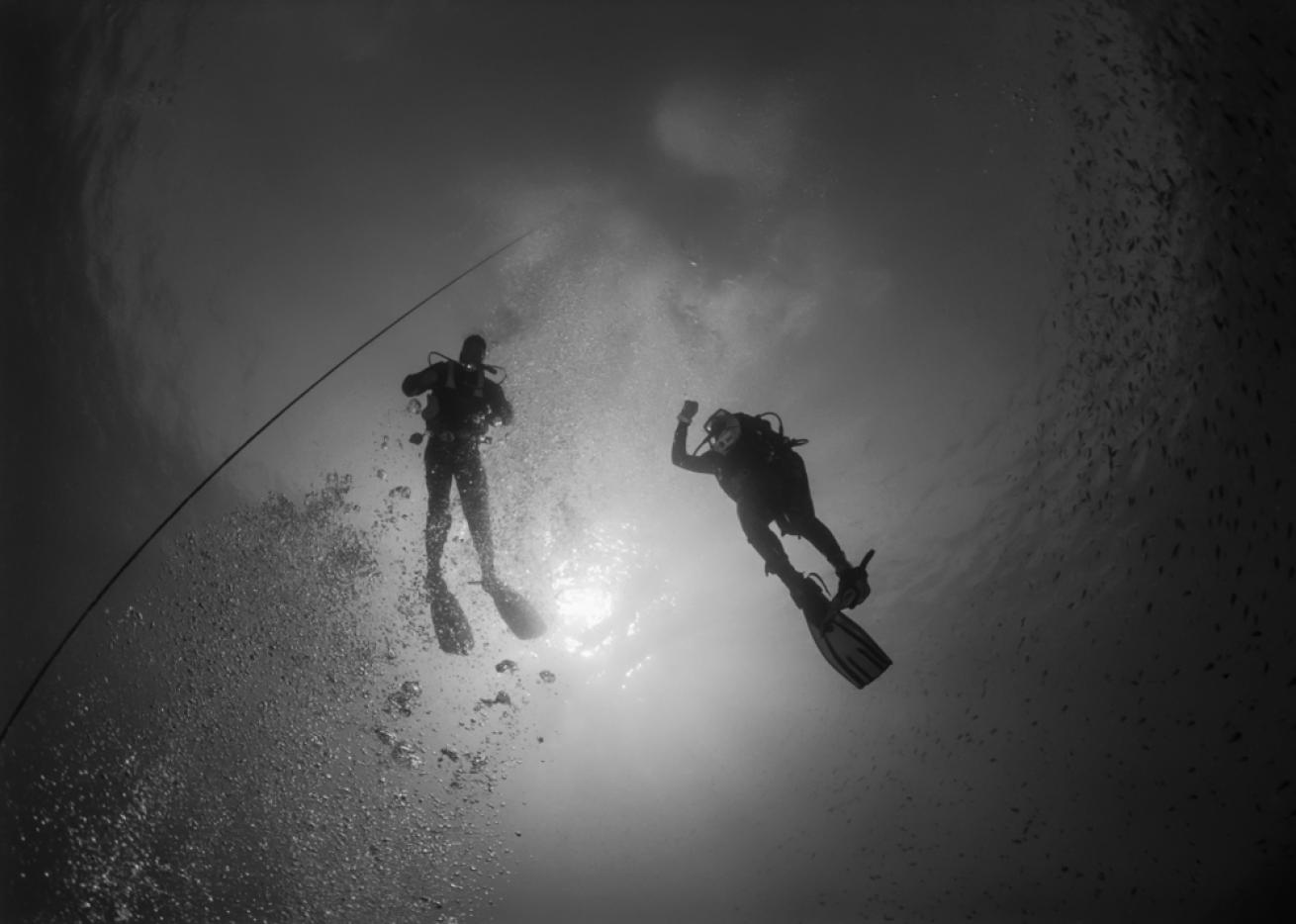The Wrong Ditch

The Wrong Ditch
Shutterstock
Setting the Stage
Ed.'s note: The incidents described here are real. Names of locations and people have been changed or deleted.
Jeff was a fit, well-liked family man who often dived in local lakes with a buddy from work named Brandon. Family commitments kept them from making dive trips out of the area, and they never found the time for advanced dive training.
The Dive Site
One morning, Jeff and Brandon drove to a lake that was not one of their regular dive spots. They had received a good briefing from some diver friends and found the described entry point to be easily accessible. The water was calm and cold, and the visibility was limited. The area they planned to dive in was 40 to 100 feet deep, near shore and with no known entanglement hazards. Their loose dive plan called for them to go to the bottom, look around and come back. Although they performed a buddy gear check on the shore, there was no discussion about how they would handle buddy separation or an emergency.
The Dive
Well into the dive, Brandon looked around and found that Jeff was no longer with him, so he continued on with his dive until he was low on air. He expected he would meet Jeff back on shore. A while after Brandon surfaced, Jeff had not shown up, so Brandon called the local emergency services, which responded with a dive rescue team.
The Recovery
The rescue team found Jeff dead at 90 feet on the mud bottom, still wearing his weight belt. His nearly empty scuba unit had been ditched and was lying several feet away from his body. The dive rescue team recovered the body and the dive gear, but the team's volunteers had little training in evidence handling, and the scuba equipment was not protected from damage during the recovery.
Investigation and Legal Action
The investigation revealed that during Jeff's entry-level class, his only dive course, he had never ditched his weight belt, or even done the removal and replacement exercise, but he had practiced the ditch and recovery of his scuba unit. The instructor told the class that practicing weight-ditching skills might damage the pool, and that on their open-water training dives it was too turbid and silty to perform the weight belt exercises.
When the dive equipment was finally checked, well after the accident, the oral inflator had dried mud in it, and the other BC valves did not function properly.
Jeff's widow sued the BC manufacturer. At a court-ordered pre-trial settlement conference, the attorney for the plaintiff offered to take an out-of-court settlement, but the defense refused.
The Trial
At trial, both the plaintiff's and defense's expert witnesses agreed that Jeff most likely encountered some unknown difficulty complicated by a low-on-air situation, ditched his scuba unit, attempted an emergency swimming ascent against negative buoyancy, panicked, embolized and drowned. They also agreed that it could not be ascertained how or when the BC valves became non-functional.
In spite of this, the jury awarded Jeff's wife $8.3 million. A higher court later reduced this to an amount closer to the proposed pre-trial settlement figure.
Lessons for Life
-
Be sure your scuba instruction is complete and thorough. Take advanced training or a refresher course if you are away from diving for some time.
-
If there's an emergency that can't be solved under water, go to the surface, using positive buoyancy if necessary.
-
When buddy diving, have a plan appropriate to the conditions, and, in particular, a plan for buddy separation.
-
Maintain an open airway during an emergency ascent, and, if there is any question of whether you will reach the surface safely, get positively buoyant.

ShutterstockThe Wrong Ditch
Setting the Stage
Ed.'s note: The incidents described here are real. Names of locations and people have been changed or deleted.
Jeff was a fit, well-liked family man who often dived in local lakes with a buddy from work named Brandon. Family commitments kept them from making dive trips out of the area, and they never found the time for advanced dive training.
The Dive Site
One morning, Jeff and Brandon drove to a lake that was not one of their regular dive spots. They had received a good briefing from some diver friends and found the described entry point to be easily accessible. The water was calm and cold, and the visibility was limited. The area they planned to dive in was 40 to 100 feet deep, near shore and with no known entanglement hazards. Their loose dive plan called for them to go to the bottom, look around and come back. Although they performed a buddy gear check on the shore, there was no discussion about how they would handle buddy separation or an emergency.
The Dive
Well into the dive, Brandon looked around and found that Jeff was no longer with him, so he continued on with his dive until he was low on air. He expected he would meet Jeff back on shore. A while after Brandon surfaced, Jeff had not shown up, so Brandon called the local emergency services, which responded with a dive rescue team.
The Recovery
The rescue team found Jeff dead at 90 feet on the mud bottom, still wearing his weight belt. His nearly empty scuba unit had been ditched and was lying several feet away from his body. The dive rescue team recovered the body and the dive gear, but the team's volunteers had little training in evidence handling, and the scuba equipment was not protected from damage during the recovery.
Investigation and Legal Action
The investigation revealed that during Jeff's entry-level class, his only dive course, he had never ditched his weight belt, or even done the removal and replacement exercise, but he had practiced the ditch and recovery of his scuba unit. The instructor told the class that practicing weight-ditching skills might damage the pool, and that on their open-water training dives it was too turbid and silty to perform the weight belt exercises.
When the dive equipment was finally checked, well after the accident, the oral inflator had dried mud in it, and the other BC valves did not function properly.
Jeff's widow sued the BC manufacturer. At a court-ordered pre-trial settlement conference, the attorney for the plaintiff offered to take an out-of-court settlement, but the defense refused.
The Trial
At trial, both the plaintiff's and defense's expert witnesses agreed that Jeff most likely encountered some unknown difficulty complicated by a low-on-air situation, ditched his scuba unit, attempted an emergency swimming ascent against negative buoyancy, panicked, embolized and drowned. They also agreed that it could not be ascertained how or when the BC valves became non-functional.
In spite of this, the jury awarded Jeff's wife $8.3 million. A higher court later reduced this to an amount closer to the proposed pre-trial settlement figure.
Lessons for Life
Be sure your scuba instruction is complete and thorough. Take advanced training or a refresher course if you are away from diving for some time.
If there's an emergency that can't be solved under water, go to the surface, using positive buoyancy if necessary.
When buddy diving, have a plan appropriate to the conditions, and, in particular, a plan for buddy separation.
Maintain an open airway during an emergency ascent, and, if there is any question of whether you will reach the surface safely, get positively buoyant.










